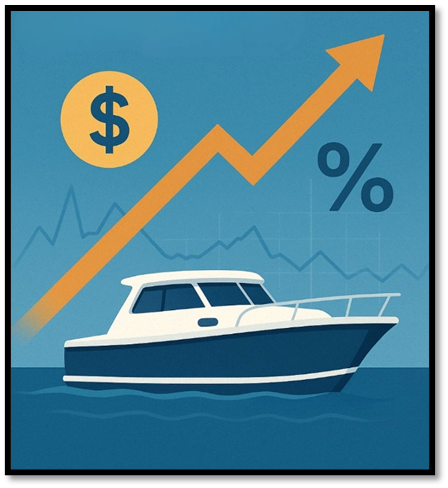Understanding What Really Drives Boat Loan Rates
 There is a common misconception that when the Federal Reserve changes interest rates, it directly affects boat loan and mortgage rates. In reality, these short-term rates determined by the Fed have little influence on how lenders set rates for consumer or mortgage loans.
There is a common misconception that when the Federal Reserve changes interest rates, it directly affects boat loan and mortgage rates. In reality, these short-term rates determined by the Fed have little influence on how lenders set rates for consumer or mortgage loans.
Marine lenders base their rates on the five-year Treasury, since this tracks with the average lifespan of a boat loan —even if the term extends up to 20 years. Likewise, mortgage lenders look to the 10-year Treasury as a benchmark, because the average life of a 30-year mortgage is roughly 10 years.
The final marine rate is set using a “cost-plus” model tied to the five-year Treasury. This approach factors in the bank’s operating costs, a risk premium based on the borrower’s financial profile, and the bank’s desired profit margin.
Most lenders reserve their best rates for borrowers with credit scores of 800 or higher, with tiered pricing applied for scores down to around 680. You may also qualify for rate discounts by making a larger down payment—30% or more instead of 15–20%—or by choosing a shorter term, such as 10 or 15 years instead of 20.